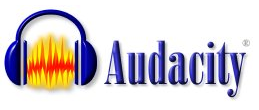Audacity – The Free Audio Recording Software
Audacity is a bit of a breakthrough in audio software for several reasons. The first of those reasons is that it is free. The second reason is also that it is free. Ok, seriously this time. The third reason is that this software is capable of doing some pretty sophisticated things, especially for the price, which I believe I mentioned once or twice.
So you probably want to know all about it now right? Well I can certainly give you a summary of Audacity, along with the pros and cons. Let’s dive in.
The Good
Like I said, Audacity is pretty amazing for the price. Depending on what kind of recording you are (or plan on) doing, you can get professional level results with this software. In a nutshell, Audacity is an audio recorder and editor that you can use on multiple platforms, including Windows, Mac and GNU/Linux. It is a 32-bit application.
For recording, it is great for capturing one thing, on one track, at a time. This is good news for most folks doing home recording, especially podcasters and other voice over type folks. Just connect a microphone into your computer and hit the big, fat red “record” button and start talking (or singing, or playing an instrument, or… you get the idea). When you’re done, hit the big “Stop” button and you’re done.
If that was all you needed to record (just the one track), and you’re happy with the way it sounds, all you need to do now is “export” it, which saves your audio as a wav file.
You can also choose to save your audio as an Ogg Vorbis file, which is a data-compressed file comparable to mp3, which means it takes up less space for internet use, etc. It is also open-source and un-patented, unlike mp3. You can also export your audio as an mp3, but you have to install the the Lame Encoder first. Instructions for doing that are on the Audacity web site. It’s pretty easy. [note: this is no longer the case! Starting in 2019, the mp3 encoder comes installed. woohoo!]
If you aren’t happy with the audio you just recorded on the one track, you can use any of the dozens of editing tools that are built right in, such as noise reduction, EQ, compression, fading, etc. You can also add effects from the built-in selection, such as echo, delay, phaser, reverser, or play with the time and pitch tools. Those are just to name a few.
The latest version of Audacity can utilize VST plugins as well. This means you can add effects and editing tools from 3rd party programs as plugins.
If you want to add tracks to play along with your first track, you can also do that while listening to the first one play back. This, in effect, turns Audacity into a multi-track recorder as well.
You can use this function to add background music behind your voice. Or you can even sing harmony with yourself (or whoever), record other instruments to make yourself a one-person band, etc. When you’re done adding these additional tracks, just mix the volumes together and maybe pan the tracks so that some of the sounds sound like they’re coming from the left, some from the right, and some from the middle, and then export your production.
The Maybe Not-So-Good
I finished up the “The Good” section talking about using Audacity for multi-track recording. One thing that is a problem when doing this is that there are synchronization issues between the tracks. I find I have to manually slide the audio on a track left or right to get it to sync up with the audio in the track above it, which is a bit wonky.
Another huge drawback (though remember, we ARE talking about free and very basic software here) is that you can’t do anything with MIDI or virtual instruments. So for musicians, this is probably not the best software to use if you want to produce professional music tracks.
The quality of the built-in effects is also not the highest. The noise-reduction tool is one example of this. I found that it was very difficult to do much noise reduction without the resulting audio having the tell-tale “under-water” sound to it. Compared to the audio restoration tools in programs like Adobe Audition, it is definitely not great.
Another thing that I find to be a problem with Audacity is that it just tends to be very complex. I’ve heard folks say that you need to have an engineering degree to figure it out. I don’t know if that’s true. There are certainly lots of tutorials out there. Heck, the entire first module of our home recording course – The Newbies Guide to Audio Recording Awesomeness 1 uses Audacity exclusively, mainly because we wanted to start folks out with a budget of $5.00 or less. But without some good guidance like that, I’d have to say the Audacity is not very user-friendly, especially to folks who are just beginners in the audio recording world.
There you have your down-and-dirty overview of Audacity, the free audio recording software that can do some amazing things, especially for the price.
Cheers!
Ken

